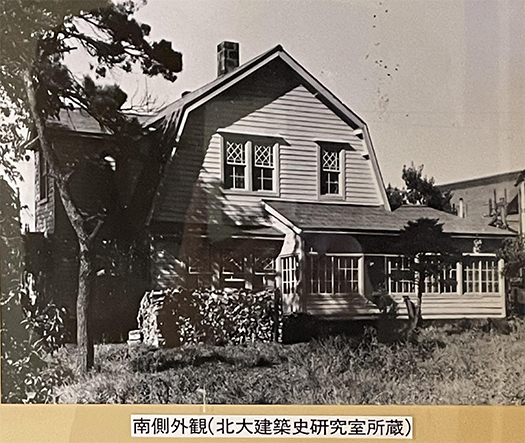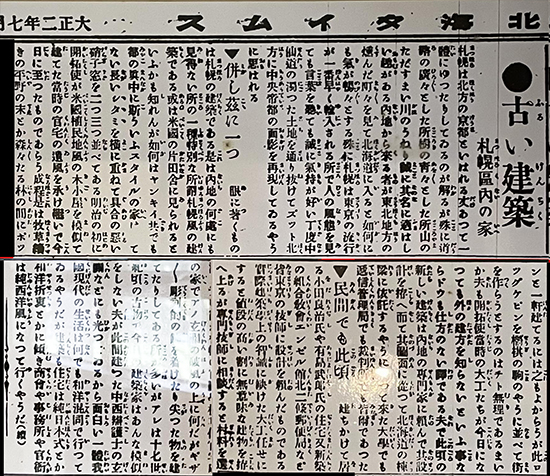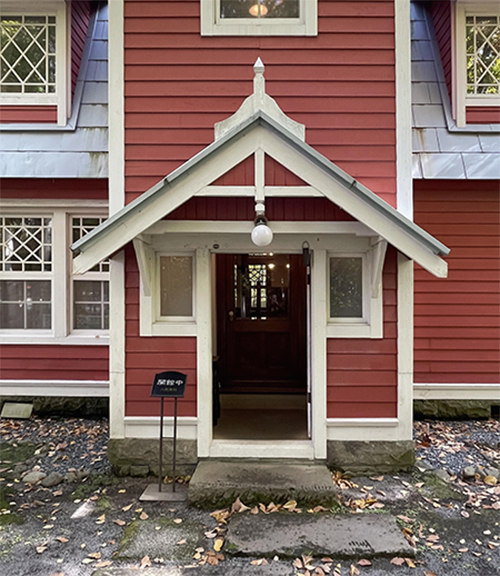

先般の記事で有島武郎の大正2年新築の住宅について、地元新聞社がNEWS住宅として記事掲載していたという情報をお知らせしましたが、先日、その110年前の7月9日付けの紙面をスクリーンショットできた。
はるかな先人の住宅ルポなので可能な限り、現代文訳をこころみた。新聞社自体が消滅しているので、正確さについては、ご容赦願いたい。以下、記事の現代文再現。
●古い建築〜札幌區(く)内の家
札幌は北方の京都といわれるだけあって一体にゆったりしているのが解るが殊に道路の広々したところ、樹木の青々としたところ、山の佇まい、川のうねり、まことにその名にふさわしい趣がある。内地から来る者が東北地方の燻(くす)んだ町々を見て北海道に入るといかにも気がのびのびとする。殊に札幌は東京の流行がいちばん早く輸入されるところで、人の「風態〜なり」を見ても言葉を聞いてもまことに気持ちがいい。ちょうど中山道の濁った土地を通り抜けてズッと北方に中央帝都の面影を再現しているように思われる。
▲しかし茲(ここ)にひとつ目に付くものは札幌の建築である。これは内地のどこにも見得ないところの一種特別な所謂「札幌風」の建築である。あるいは米国の片田舎に見られるというかも知れんが如何はヤンキイ共でも都の真ん中にこういうスタイルの家は(?)てない。長い下見板を横に重ねて具合の悪い硝子窓を二つ三つ並べてある。明治の開拓使が米国植民地風の木小屋を真似て建てた当時の官宅の遺風を受け継ぎ今日に至ったのだろう。
・・・<ちょっと疲れが襲ってきた(泣)以下、複写写真をごらんください・・・。>

この後の文面には「民間でもこの頃、建ちかけている小田良治氏や有島武夫氏の住宅」と紹介されている。しっかりした設計がないままに未成熟な技術で建てられている状況に対して、警句を放っているというような文面。さすが新聞記者として社会批評的なスタンスで切りまくっている。ただ、対置しているまっとうな建築として「東京の技師に設計を頼んだもの」こそ正しいと言わんばかりの論にはいささか・・・。文章全体に東京を上位概念として、下々なるものとして地方を「見下す」ような報道姿勢を感じさせられて、どうも地元への愛を感じさせられない。地方人としての同胞感はないのかとやや悲しい。
「一体わが国現代の生活はなんでも和洋混合で行っているようだが、建築も住宅は純日本式とか和洋折衷とかに傾き、商会(商業建築)や事務所や官衙は純西洋風になっていくようだ。」というのが結論のよう。
どうも建築に寄り添っているというよりも、建築に寄せて北海道政治への批判を狙っているような文章の流れを感じさせられる。住宅の和洋折衷化はごく自然の流れだったと思われるなかで、この論者の「よき住宅観」はどうも明確には見えてこない。わたし的には一部同意、そのほかはちょっと不同意という記事でした(泣)。
English version⬇
Hokkaido residence article excavated in 1913 (!) Former Takeo Arishima Residence-6]
A rather unfortunate article that shows an intent to diss society, rather than a positive attitude of “building up local architecture together”. …
In a recent article, we reported that a local newspaper had published an article on the newly built house by Takeo Arishima in 1913 as a NEWS house, and we were able to take a screenshot of the July 9 edition, 110 years ago.
Since this is a report on the housing of a distant predecessor, we have tried to translate the article into modern Japanese as much as possible. The newspaper itself is no longer in existence, so please forgive me for any inaccuracies. The following is a modern translation of the article.
Old Architecture – House in Sapporo Dist.
Sapporo is called the “Kyoto of the North,” and it is known for its spaciousness, especially its wide roads, lush trees, mountain scenery, and undulating rivers. When people from Japan see the smoky towns of the Tohoku region and enter Hokkaido, they feel relaxed and at ease. Sapporo, in particular, is the earliest place to import Tokyo trends, and it is truly pleasant to see and hear people’s “style” and “mannerisms. It seems as if the city is recreating the image of the central imperial capital in the north, passing through the muddy land of Nakasendo.
The architecture of Sapporo, however, is one of the most striking features of the city, and it is unlike anything seen anywhere else in Japan. This is a kind of special so-called “Sapporo style” architecture that cannot be found anywhere else in Japan. You might say that it can be found in the rural areas of the U.S., but even the Yanks do not have houses of this style in the center of the capital. It is a bad idea to build a house with long clapboards piled up horizontally. It is made of long clapboards piled up horizontally and has two or three windows with bad glass. It is probably a legacy of the government houses built by the Meiji Kaitakushi (Hokkaido Development Office) in imitation of the wooden shacks of the American colonial style.
I am feeling a little tired (crying)…. >The following is a photocopy.
In the text that follows, it says, “The houses of Mr. Ryoji Oda and Mr. Takeo Arishima are being built in the private sector at this time as well. The text seems to be a warning against the situation where houses are being built with immature technology without a solid design. As one would expect from a newspaper journalist, he takes a socially critical stance in his piece. However, I was a bit concerned about the argument that “the building designed by Tokyo engineers” is the correct one as an honest architecture. The entire article gives the impression that Tokyo is a higher concept, and that the local people are “looked down upon” as inferior, which does not make me feel any love for the local people. It is a little sad to think that there is no sense of fellowship as a local person.
The conclusion of the report seems to be, “Modern life in our country seems to be a mixture of Japanese and Western styles, with houses leaning toward a purely Japanese style or a blend of Japanese and Western architecture, while commercial buildings, offices, and government offices are becoming purely Western. This seems to be the conclusion.
It seems that the author is aiming to criticize Hokkaido politics by leaning toward architecture rather than leaning toward architecture. The author’s “good view of housing” is not clear, as it seems that the blending of Japanese and Western styles of housing was a very natural trend. I agree with some parts of the article, and disagree with others (I cried).
Posted on 10月 21st, 2023 by 三木 奎吾
Filed under: 住宅取材&ウラ話, 日本社会・文化研究







コメントを投稿
「※誹謗中傷や、悪意のある書き込み、営利目的などのコメントを防ぐために、投稿された全てのコメントは一時的に保留されますのでご了承ください。」
You must be logged in to post a comment.